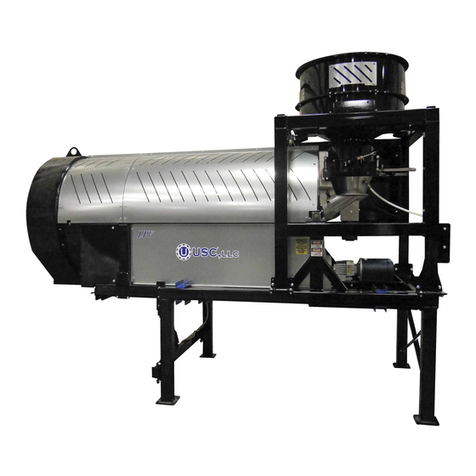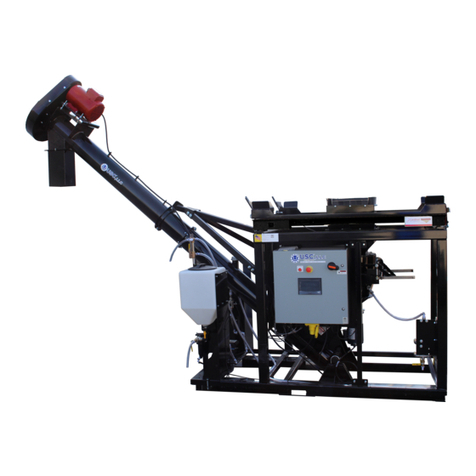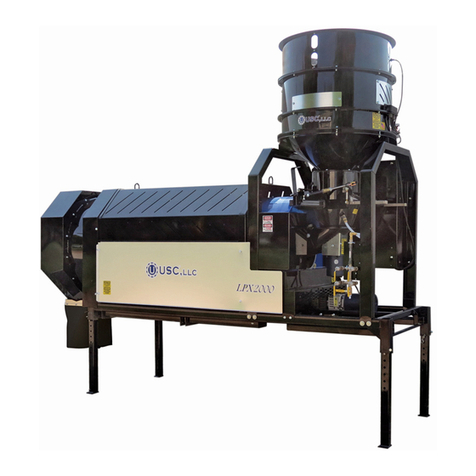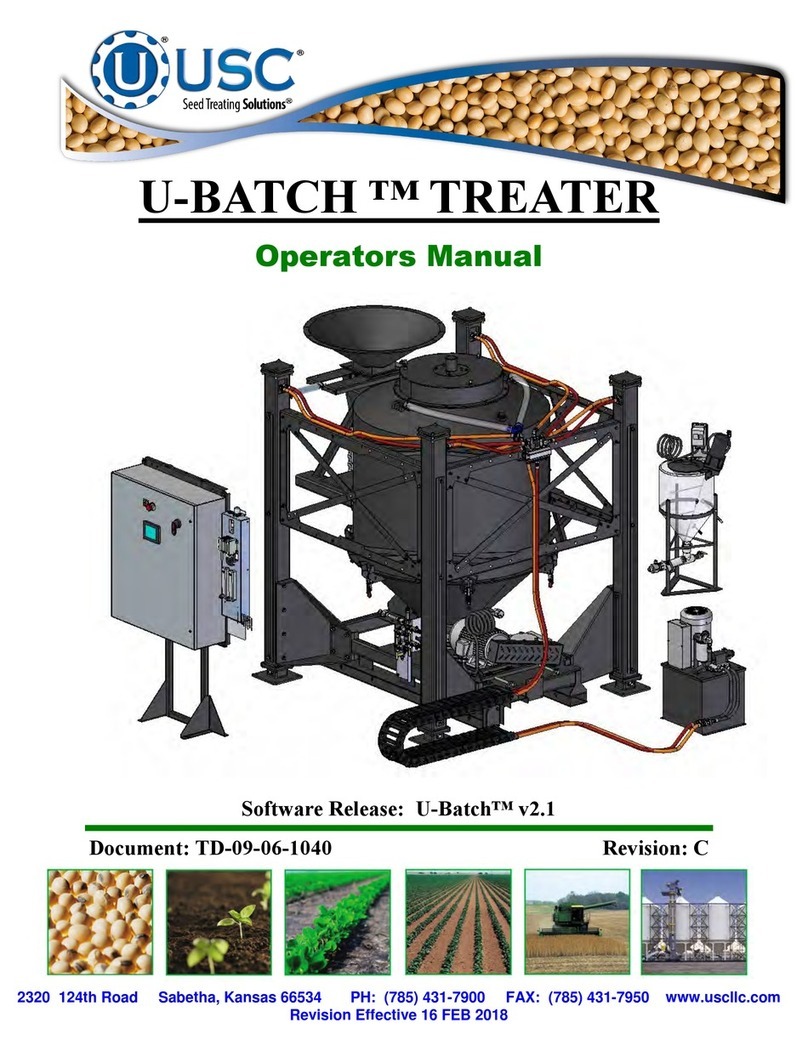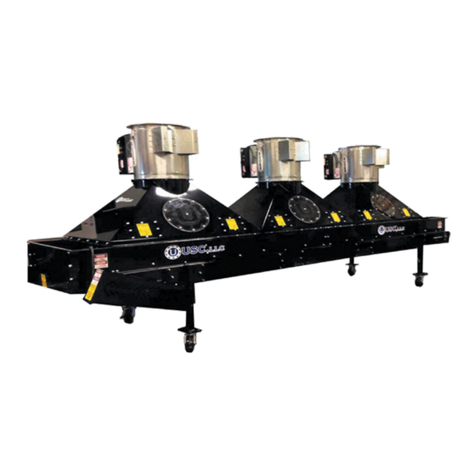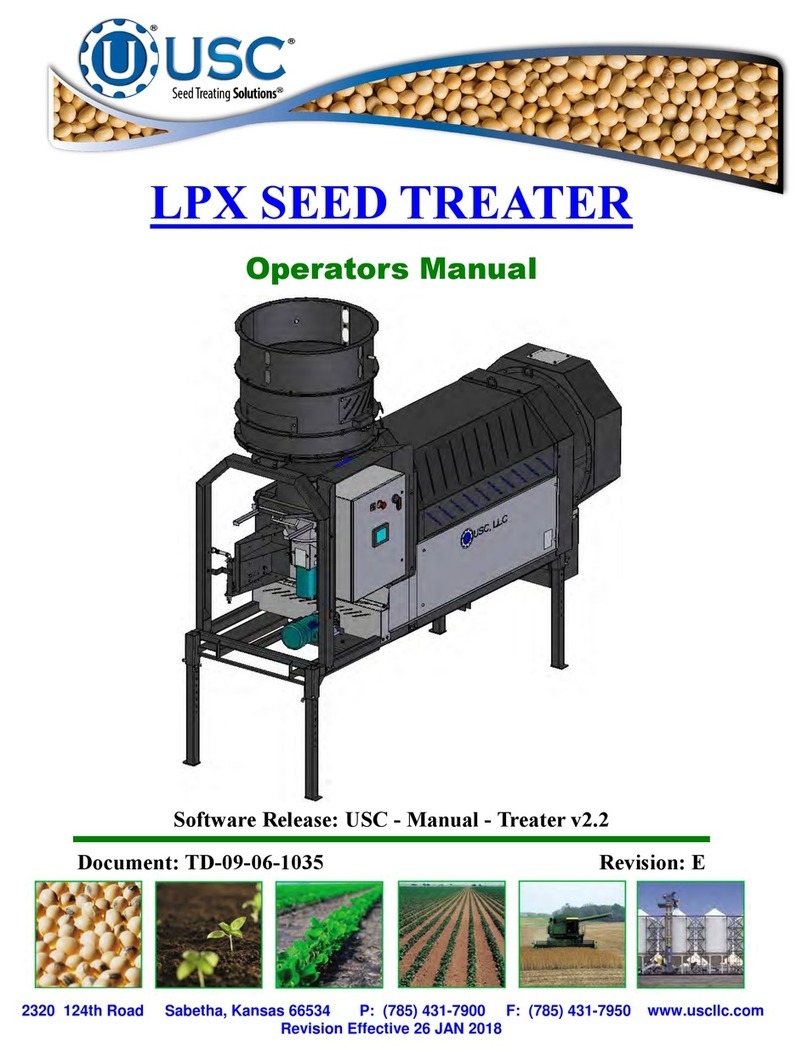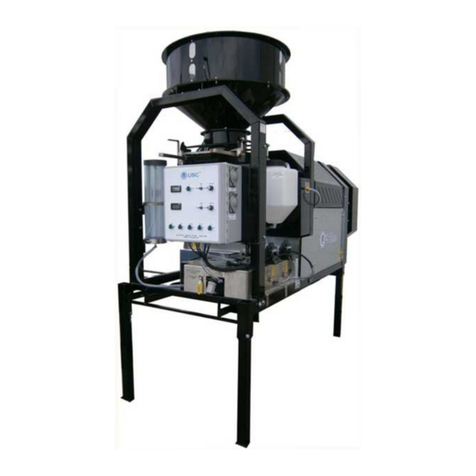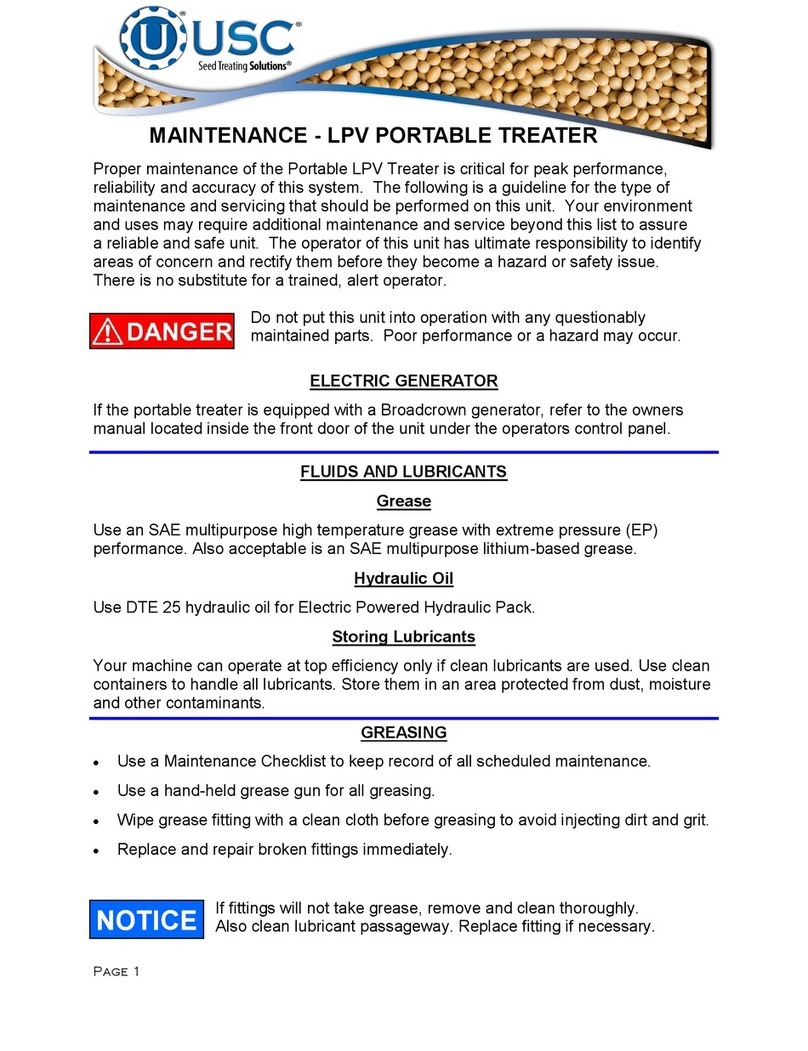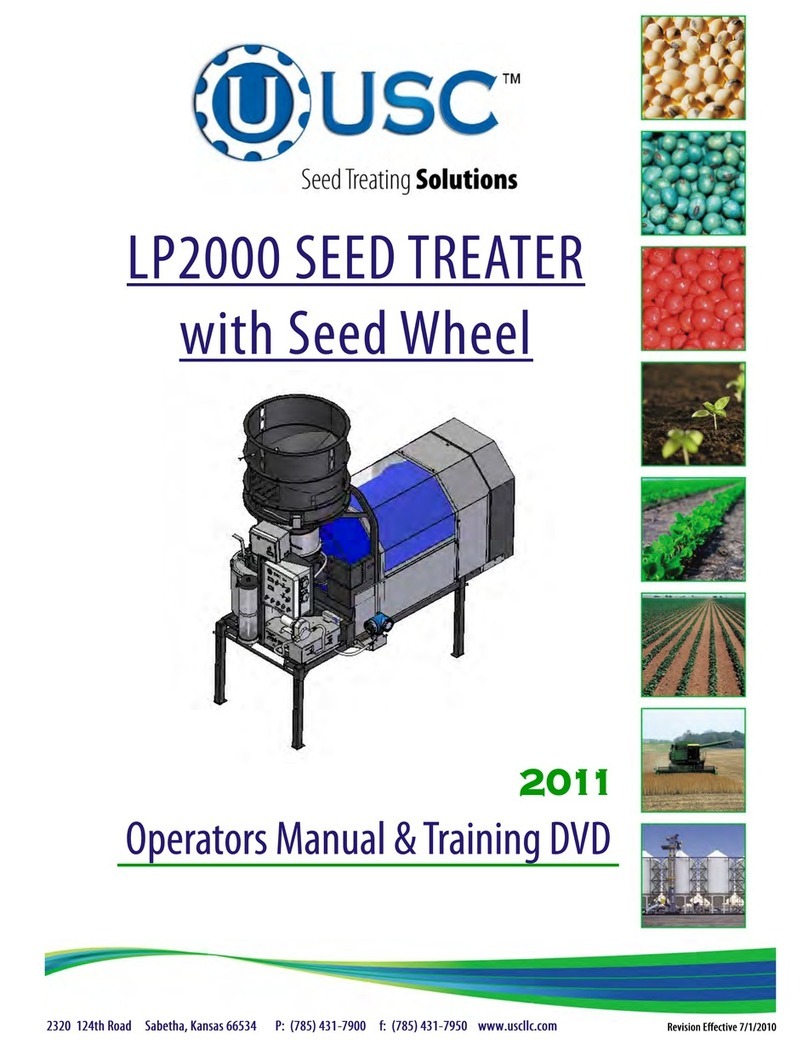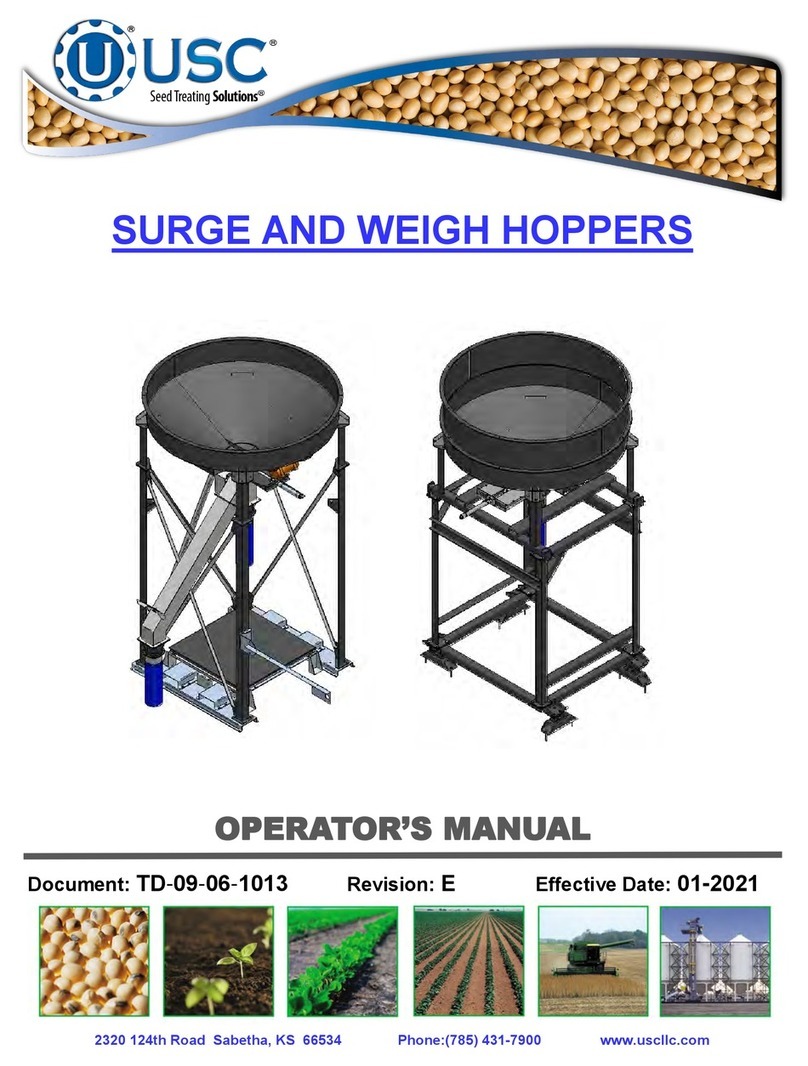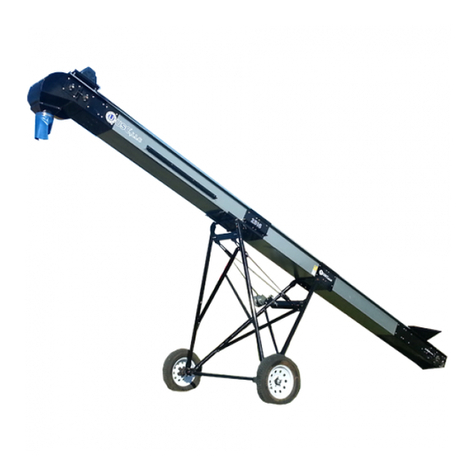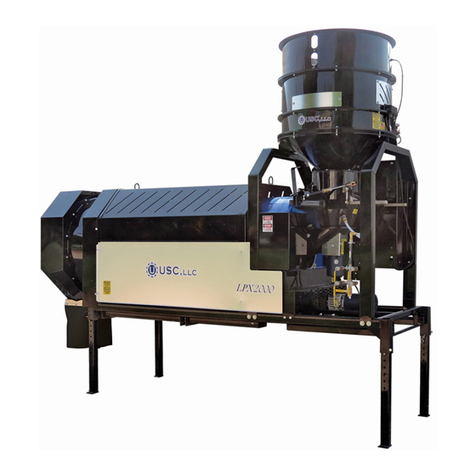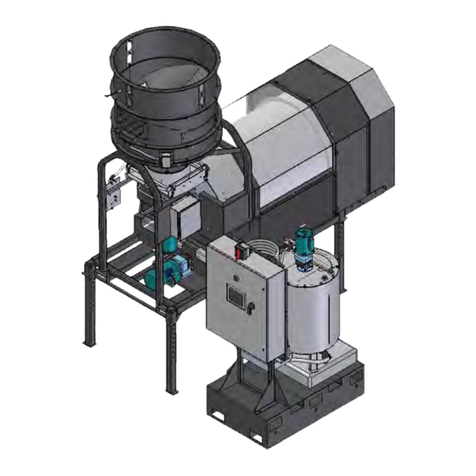
USC, LLCPage 4
LPX AUTOMATED SEED TREATER
Section Contents Page #
Section A Safety Instructions.....................................................................5
Section B Installation................................................................................12
Section C Mechanical Operation..............................................................16
Treater Overview....................................................................16
Supply Hopper & Seed Wheel................................................17
Atomizer Chamber & Rotating Drum......................................18
Pump Stand Overview............................................................19
Mix Tank, Calibration Tube & Flow Meter ..............................20
Pump......................................................................................21
Pump Stand Valves................................................................22
Section D Electrical Operation.................................................................24
Main Screen...............................................................................26
H-O-A Screen.............................................................................29
Utilities Screen...........................................................................33
Security Screen..........................................................................35
Tools & Options Screen.............................................................37
Section E Calibration ................................................................................41
Seed Flow Calibration................................................................41
Pump Calibration .......................................................................44
Flow Meter Calibration...............................................................45
Treating Seed ............................................................................46
Reports.......................................................................................48
Seed Wheel Calibration .............................................................50
Printing & Uploading Reports.....................................................51
Section F Troubleshooting & Alarms......................................................58
Troubleshooting .........................................................................58
Proximity Switch Adjustment Guide...........................................60
System Alarms - Faults..............................................................61
Paused Controlled Warning.......................................................64
System Messages......................................................................65
Section G Maintenance .............................................................................66
Section H Storage......................................................................................69
Section I Mechanical Drawings ..............................................................72
Section J Limited Warranty....................................................................119
Table of Contents
Table of Contents
